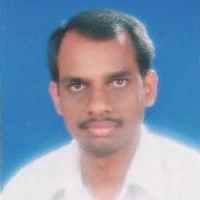
Srinivasa Rao A.V
Work place: ECE Department, AKRGCET, Nallajerla, Andhra Pradesh, India
E-mail: ada_bala@rediffmail.com
Website:
Research Interests: Image Processing, Pattern Recognition
Biography
Adabala Venkata Srinivasa Rao obtained his B.Tech degree in Electronics and Communication Engineering from JNT University, Kakinada, India, AMIE Electrical from Institute of Engineers (India), Kolkotta,India. and M.Tech in Instrumentation and Control Systems from JNT University, Kakinada, India. He was worked in various engineering colleges at different positions. He is currently working as an Associate Professor in AKRG college of engineering and technology, Nallagerla, WG Dist, Andhra pradesh, India. He has 9 years of teaching and 4 years of industrial experience. He has 13 publications in various International Conferences and journals. His area of interests include Pattern Recognition , Image Processing and VLSI. He is an active member in professional bodies like AMIE, IACSIT
Author Articles
Segmentation of Ancient Telugu Text Documents
DOI: https://doi.org/10.5815/ijigsp.2012.06.02, Pub. Date: 8 Jul. 2012
OCR of ancient document images remains a challenging task till date. Scanning process itself introduces deformation of document images. Cleaning process of these document images will result in information loss. Segmentation contributes an invariance process in OCR. Complex scripts, like derivatives of Brahmi, encounter many problems in the segmentation process. Segmentation of meaningful units, (instead of isolated patterns), revealed interesting trends. A segmentation technique for the ancient Telugu document image into meaningful units is proposed. The topological features of the meaningful units within the script line are adopted as a basis, while segmenting the text line. Horizontal profile pattern is convolved with Gaussian kernel. The statistical properties of meaningful units are explored by extensively analyzing the geometrical patterns of the meaningful unit. The efficiency of the proposed algorithm involving segmentation process is found to be 73.5% for the case of uncleaned document images.
[...] Read more.Other Articles
Subscribe to receive issue release notifications and newsletters from MECS Press journals